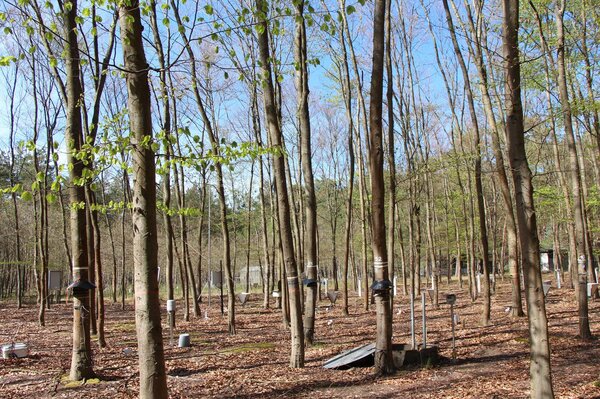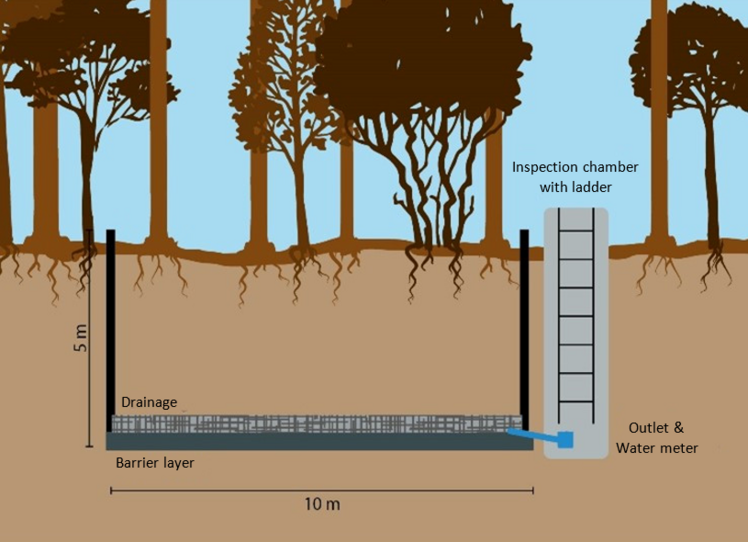Deep seepage

Deep percolation is an important component in the water cycle. It refers to the water that leaves the soil area accessible to plants downwards and after some time joins the groundwater as so-called groundwater recharge. How large this quantity is depends, among other things, on the weather, the soil and the vegetation. A change in these factors also alters deep percolation. Long-term deep percolation can be regarded as the precipitation water that is not released into the atmosphere through interception and soil evaporation as well as root uptake and transpiration of the vegetation.
In order to investigate the influence of different tree species on deep percolation, nine large lysimeters were set up on the Britz intensive monitoring site and planted with pines, Douglas firs, beeches and larches in 1974. Between 1999 and 2000, two pine stands were underplanted with beech and oak respectively. One larch site was underplanted with beech and one larch site was converted into a young oak stand. Assuming that we have the same soils and the same climate here, differences in the measured deep percolation indicate the influence of the different vegetation on the lysimeters.
Illustration of a large lysimeter with trees
